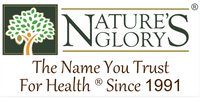In 2021, there has been an increased demand for clean beauty from health-conscious consumers worldwide. With people putting more focus into their overall health, they find that changing their lifestyle--from the food they eat to the products they use--is essential to obtaining the best health possible.
Among the many organic practices that emerged in the past years, switching to clean beauty has been one of the most influential.
What is clean beauty?
Essentially, clean beauty is a lifestyle that advocates the use of non-toxic products to protect the consumers' health, as well as the environment's. In other words, it offers a range of beauty products that utilise natural, sustainable, and clean ingredients without the use of harsh chemicals to offer maximum health and beauty benefits.
Although it started as a trend, it’s slowly become a norm for all beauty users. So, if you want to join the organic movement and switch to clean beauty, these are the steps you need to follow.
STEP 1: Understand what clean beauty is
Before you dive in, you first need to understand what this concept is all about. Although most people understand this as a beauty practice that avoids toxic products, it’s much more than that. Clean beauty is all about transparency.
There may be some instances where products promote themselves as "clean" but contain ingredients that are not naturally sourced. Often, these products present an overwhelming ingredients list or keep specific ingredients hidden to confuse the consumers.
That's why it's important not to be swayed by popular products that claim to be "clean," but are anything but. Understanding what clean beauty is can protect you from such products and help you make better, healthier decisions.
STEP 2: Look at the ingredients list
In order to make sure that you’re making the right beauty decisions, you need to familiarise yourself with the ingredients list. You need to know which ingredients are essential and which ones to avoid.
To start, you can check the product's label. Phrases such as sulphate-free, paraben-free, and preservative-free can help you narrow down your search for clean products. In addition, you can look for labels that claim the use of all-natural, green, and organic ingredients. These are essential steps you need to take to choose the right products.
It’s not enough to know just what to look for. You also need to know what ingredients to avoid. There are thousands of toxic chemicals in the beauty industry, but here are the top six you need to avoid at all costs.
- Parabens
- Synthetic fragrance
- Octinoxate or oxybenzone, also known as chemical UV filters
- Sodium Laureth sulphate
- Triclosan
- formaldehyde
Products containing the ingredients mentioned above can pose a health risk as too much exposure to these ingredients can lead to organ toxicity, hormone disruption, and even cancer.
STEP 3: Declutter your beauty products
So, if you find any of these ingredients in your existing beauty products collection, it's imperative to throw them out as soon as possible. Keeping them at home will only confuse you about which product to reach out for when you do your skincare and makeup routine.
So, it’s better to have a clean slate where you can fill in with products that follow clean beauty standards. This way, you can successfully make the switch to organic products without being tempted to revert to your old routine.
STEP 4: Find clean beauty brands locally
You can start by looking for an organic shop in Singapore such as Nature's Glory who only offer certified organic products to ensure the health and safety of the consumers and promote a healthier lifestyle.
You can also look for local organic shops that offer delivery services. With this, you not only gain access to a wide range of clean beauty products, but you also benefit from the convenience it offers.
STEP 5: Prioritize which products to switch out first
It's understandable to feel overwhelmed in making the switch to organic. That's why it's recommended to start small. Start with replacing everyday products like deodorant, sunscreen, lip balm, face wash, and shampoo with their organic counterparts. Once you get the hang of it, you can expand your organic products.

